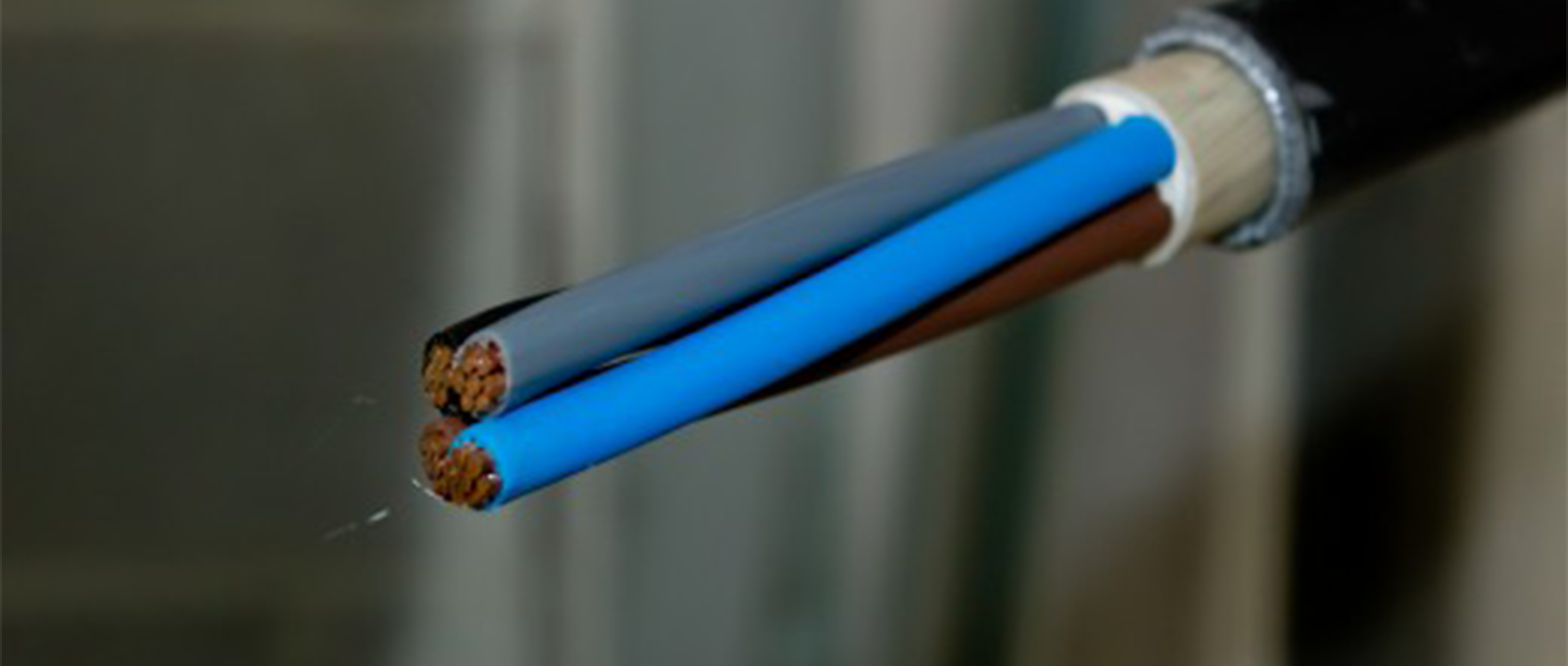Why do some cables have XLPE insulation?
PVC is a popular material for cable insulation, but in some cases, XLPE is used. Here’s why.
Cross-linked polyethylene (XLPE) was invented in 1963 in the General Electric Research Laboratory, which was the first industrial research facility in the United States. Their purpose was to create a cross-linked material that can withstand an operating temperature of 90°C and has better mechanical and thermal properties than standard polyethylene.
The process of cross-linking the polymers changes the molecular structure of the polymer chains, binding them tightly together. This enhances the material’s ductile strength and stability. The process also improves the material’s ability to withstand higher temperatures and electrical stresses. This makes the material ideal for cable electrical insulation.
PVC vs XLPE
Polyvinyl chloride (PVC) has a maximum working temperature of 70°C when insulating electrical cables – that is exactly what is required for standard building cables as defined in the wiring regulations. With a higher working temperature of 90°C, cables with XLPE insulation can run a higher temperature and a higher current in the conductors.
This is because XLPE is a thermoset material, whereas PVC is a thermoplastic material. The polymers in thermoplastics can be softened through heating, which makes them pliable. The polymers then solidify when they cool and harden. Since the molecules in XLPE are chemically bonded together, it has greater ductile strength and impact resistance, and will not melt or drip in temperatures up to 90°C.
The structure of XLPE makes it extremely resistant to abrasion as well as wear and tear, which makes a XLPE insulated cable less prone to cracking and ageing. XLPE is also resistant to high voltage electricity, chemicals, and other hazardous materials.
Types of XLPE insulated cable
XLPE cables are electrical cables that are commonly used for power distribution and transmission. The British Standard for thermosetting cables (BS 5467) was originally published in 1977 and specifies requirements for the construction and performance of thermosetting insulated, armoured cables of rated voltages of 600/1000V and 1900/3300V.
What type of XLPE insulated cable you use depends on the application and voltage requirements. Here are some of the common uses:
- Low voltage power distribution networks – typically used in homes, offices, and industrial applications
- Medium voltage power distribution networks in commercial, industrial, and residential networks
- High voltage power transmission applications – typically used for longer-distances to transmit energy from its generation source and into the national grid
- Outdoor power applications – XLPE insulation is used in aluminium wire armoured and steel wire armoured cables to help protect them from harsh outdoor environments where there is a risk of mechanical damage
Prysmian manufactures a range of XLPE insulated cables designed for these applications. The most popular is the low voltage armoured cable BS 5467. Prysmian BS 5467 can be aluminium, or steel wire armoured (SWA) cable commonly used for industrial circuits and mains distribution. It is especially robust and well suited to areas at risk of mechanical damage, such as outdoor power installations.
Another example of a low voltage XLPE insulated cable is BS 7889, which is an unarmoured industrial power cable designed for use in areas with reduced risk of mechanical damage; on tray, in free air or clipped direct, typically indoors.
While PVC remains a popular material for cable insulation, it may be necessary to use XLPE insulated cables if a higher conductor temperature (up to 90°C) is required. XLPE insulation also has a greater barrier to abrasion, moisture, and mechanical stress, allowing the cable to survive in harsh environments.
Want to know more? Discover our range of power cables.



